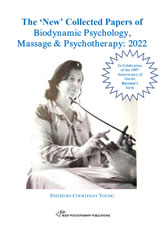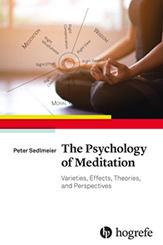Intimacy from the Inside Out
Intimacy from the Inside Out (IFIO) by Toni Herbine-Blank, Donna M. Kerpelman, and Martha Sweezy is geared toward psychotherapists who are seeking an alternative method for practicing couples therapy. IFIO therapy stems from Internal Family Systems therapy (IFS), a model developed by Richard Schwartz in the 1980s as an approach to working with individuals and families, then later expanded to include couples. IFIO couple’s therapy involves a two-step process of planning for the predictable universal issues that couples face and responding skillfully to other unexpected factors. Couples entering IFIO therapy often hold the two goals of feeling safe within their relationship and reestablishing intimacy. In the initial session, the therapist meets with the couple to inquire about hopes and goals, assess their ability to accept differences in each other, and then offer a perspective on the possibilities of treatment.
Psychotherapy East & West
In Psychotherapy East & West, Alan Watts attempts to bridge the gap between Western psychological thought and Eastern ways of life. Originally published in 1961, his goal was to provide an updated perspective on Western versus Eastern psychological ideas and provoke thought and experimentation in the reader. The 2017 reprinting of this classic instills new life into Watts’ argument that using psychotherapy without an understanding of Eastern ideologies will fall short of helping one to reach a feeling of true liberation. He posited that the groundbreaking insights of influential psychologists such as Freud and Jung synthesized with the Eastern spiritual philosophies of Buddhism, Taoism, Vedanta, and yoga could liberate people from the internal struggles within themselves.
Cognitive-Behavioral Therapy: Second Edition
Michelle Craske provides a straight forward look into the past, present and future of Cognitive Behavioral Therapy. Within the first few pages, she begins by giving a succinct and general overview of the theory behind CBT and its importance in successfully treating patients. CBT helps you become aware of inaccurate or negative thinking so you can view challenging situations more clearly and respond to them in a more effective way. This therapy can be a helpful tool in treating mental health disorders, such as depression, post-traumatic stress disorder (PTSD) or an eating disorder. But not everyone who benefits from CBT has a mental health condition. It can be an effective tool to help anyone learn how to better manage stressful life situations. Craske does not miss a chance to define or explain a concept. This makes it much easier to follow without a dictionary or DSM 5 in hand. Although some concepts may take a bit longer to wrap your head around, the use of examples makes the content a bit easier to swallow. In only about 200 pages the reader is placed in the role of the therapist, soon able to recognize these negative patterns and behaviors. This book is geared towards a narrow audience, ranging from those with a basic understanding of theory in the field of psychology to seasoned practitioners interested in understanding this approach.
The New Mind-Body Science of Depression
To better understand mental illness, psychiatrists have in the past looked at mental illness via a medical model. However, in The New Mind-Body Science of Depression, Vladimir Maletic and Charles Raison claim that we oversimplify major depression by looking at it as a discrete illness. As a result, we overlook the significance of research that doesn’t support that view. They suggest that the answers to many of our questions about major depression can be found by analyzing and integrating information we already have, but in the past ignored. They seek to map out how we came to view major depression as a discrete illness and provide evidence against that view. By doing so, they demonstrate that by sticking to misconceptions about mental illness, we are oblivious to important information that can provide some of the answers we’ve been searching for.
In the Darkest Places: Early Relational Trauma and Borderline States of Mind
In Into the Darkest Places: Early Relational Trauma and Borderline States of Mind, Jungian Marcus West re-declares early relational trauma as the root of psychological distress and analytic thinking. West ultimately works to develop an integrative approach to trauma analysis and therapy incorporating ideas from theorists like Freud and Jung who prioritize internal reactions to trauma and Ferenczi and Bowlby who emphasize real-world experiences. He suggests that our analytic approaches to trauma cannot be divorced from the experience itself or the individual and internal responses. Subsequently, using his integrative approach West offers a nuanced understanding of borderline states of mind.
Children of Refugees
We are living amidst an unprecedented global crisis with men, women, and children fleeing war, violence, persecution, torture, poverty, discrimination and exclusion only to face more of the same when they arrive betwixt and between—there are few safe places to call home. They leave cruel, inhuman, degrading treatment and punishment only to be exposed and often victimized further while traveling toward longed for international protection and services. These people need our help. They deserve our attention. They’ve witnessed and survived atrocities so heart wrenching I can’t bear to write about them in detail. Thankfully clinicians are responding. People like Aida Alayarian, MD are providing services to this vastly under-served client population.
Show Me All Your Scars
Lee Gutkind brought together twenty authors to let their voices be heard. These authors wrote about their experiences with mental illness (whether they themselves suffer or a family member), creating an intense, emotional and gripping inner look at mental illness. Just like mental disorders themselves, the stories are diverse in nature. The first entry, Take Care by Ella Wilson, immediately brings the reader into her mind mid-manic episode. Filled with heartbreaking and heavy prose and metaphor, Wilson’s place as the opening story sets the tone for the rest of the book: it’s going to be challenging, confusing, and personal.
Attachment Theory
Learned security is a learning process that involves two individuals. It results from the client’s conscious effort, which includes being in the therapeutic relationship for three years or more. It is collaborative and co-constructive. The therapist must “model a relationship where she is utterly dependable, reliable, consistent, honest, open minded, and empathic”; she must be attuned to the client, present, not pre-occupied. Her work is to help the client gain emotional autonomy, to repair therapeutic ruptures, and to help clients get to know themselves.
Through Windows of Opportunity
Through Windows of Opportunity, by neuroaffective psychotherapist Marianne Bentzen, and child psychologist and psychotherapist Susan Hart, is based on the presentations of four international leading psychotherapists concerning different neuroaffective approaches to child psychotherapy at a 2012 conference in Copenhagen. These presentations revolve around how the relationship between therapist and child can aid the child in overcoming traumas and insecure attachments in life by fostering a sense of emotional attunement and tolerance that stimulates development and change processes.
How People Change
How People Change offers 11 essays exploring growth and change, which are noted to be “at the heart of all successful psychotherapy”, and I will add at the heart of body psychotherapy and somatic psychology. The body and its place in our lives—our healing and overall health— is part of the process in many of these essays. A clear focus on mind-body dualism is supported as many of the authors write about the relationship between client and therapist and explore “the complexities of attachment, the brain, mind, and body as they aid change during psychotherapy.” Contributors include: Philip M. Bromberg, Louis Cozolino and Vanessa Davis, Margaret Wilkinson, Pat Ogden, Peter A. Levine, Russell Meares, Dan Hughes, Martha Stark, Stan Tatkin, Marion Solomon, and Daniel J. Siegel co-authoring with Bonnie Goldstein. Each essay presents the author’s thoughts on how to induce, instigate, facilitate change in psychotherapy, how to be with the client in the change process, and what it means to be in relationship with a client’s mind, brain, body, and soul. While there is not time nor need to detail each essay, I offer small glimpses of some of them.







